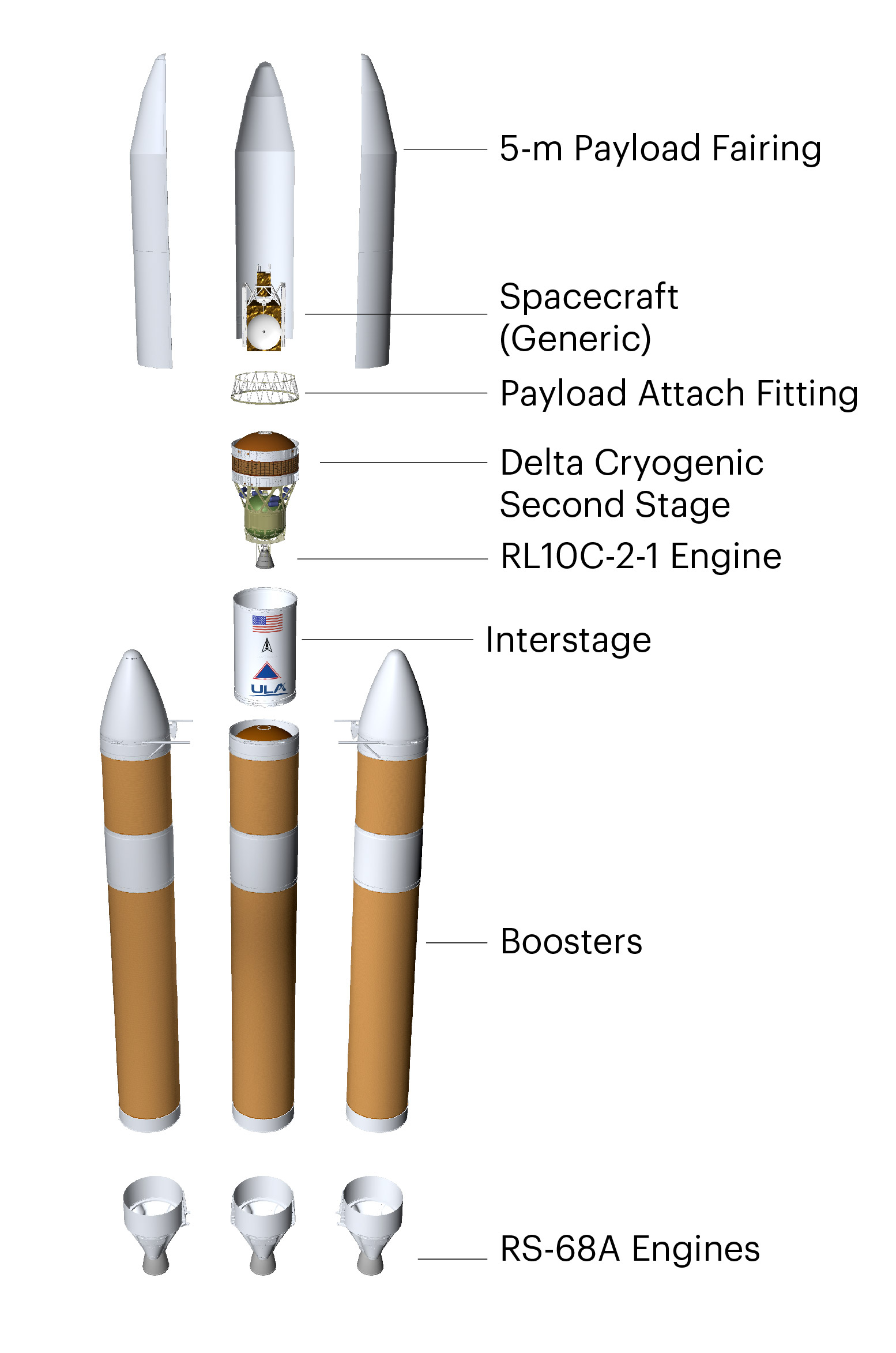DELTA IV HEAVY LAUNCHES NROL-70
The Delta program, spanning 60 years, came to a close with the launch of the final Delta IV Heavy rocket by United Launch Alliance (ULA) on April 9 at 12:53 p.m. EDT from Space Launch Complex-37 at Cape Canaveral Space Force Station, Florida. The rocket, carrying the NROL-70 mission for the National Reconnaissance Office, marks the end of the Delta era and initiates the future of heavy lift on ULA’s next generation Vulcan rocket.
Launch Date and Time: April 9 at 12:53 p.m. EDT
GO Delta IV Heavy! GO NROL-70!
Launch Webcast
Live updates
To keep up to speed with updates to the launch countdown, dial the ULA launch hotline at 1-877-852-4321.
Join the conversation on social media @ulalaunch.
#DeltaIVHeavy #NROL70 #TheDeltaFinale
Mission Overview
A United Launch Alliance (ULA) Delta IV Heavy rocket is launching the NROL-70 mission for the National Reconnaissance Office (NRO). Liftoff will occur from Space Launch Complex-37 at Cape Canaveral Space Force Station, Florida. This is the 16th and final launch of a Delta IV Heavy rocket.
The NRO develops and operates the world’s most capable and innovative overhead reconnaissance systems to collect intelligence for U.S. national security, and to support disaster relief and humanitarian efforts.
The NROL-70 mission will strengthen the NRO’s ability to provide a wide-range of timely intelligence information to national decision makers, warfighters, and intelligence analysts to protect the nation’s vital interests and support humanitarian efforts worldwide.
Launch Vehicle
Payload Fairing
The payload fairing (PLF) is a metallic trisector (three-piece shell), 5-meter diameter fairing. The PLF encapsulates the spacecraft to protect it from the launch environment on ascent. The vehicle’s height, with the 65-ft (19.8-m) long PLF, is approximately 235 ft (71.6 m).
Delta Cryogenic Second Stage (DCSS)
The Delta Cryogenic Second Stage is a cryogenic liquid hydrogen/liquid oxygen-fueled vehicle, powered by a single RL10C-2-1 engine that produces 24,750 lbs (110.1 kilo-Newtons) of thrust. The DCSS propellant tanks are structurally rigid and constructed of formed aluminum plate, spun-formed aluminum domes and aluminum ring forgings. The tanks are insulated with a spray-on insulation and helium-purged insulation blankets. An equipment shelf attached to the aft dome of the DCSS liquid oxygen tank provides the structural mountings for vehicle electronics.
Booster
The three Delta IV Heavy common booster core (CBC) tanks are structurally rigid and constructed of isogrid aluminum barrels, spun-formed aluminum domes and machined aluminum tank skirts. Delta IV booster propulsion is provided by the throttleable RS-68A engine system which burns cryogenic liquid hydrogen and liquid oxygen, with each of the three booster engines delivering 705,250 lbs (312.3 kilo-Newtons) of thrust at sea level. The booster’s cryogenic tanks are insulated with a combination of spray-on and bond-on insulation and helium-purged insulation blankets. The booster is controlled by the DCSS avionics system, which provides guidance, flight control.

Flight Profile

Space Launch Complex-37 // Processing
Space Launch Complex-37, the East Coast home of the Delta IV Heavy rocket at Cape Canaveral Space Force Station in Florida, is a classic launch pad design with a Fixed Umbilical Tower (FUT) and a Mobile Service Tower (MST). The core stages of the rocket are assembled in the nearby Horizontal Integration Facility, then rolled to the pad for attachment of the payload, final testing and the countdown. The mobile gantry is retracted to unveil the rocket several hours before liftoff.
.png?sfvrsn=6818eed1_0)
1. Delta Operations Center (DOC)
Mission Director’s Center & Second Stage Processing
2. Horizontal Integration Facility (HIF)
Receiving, Inspection & Vehicle Integration
3. Spaceflight Processing Facility
Spacecraft Processing,
Testing & Encapsulation
4. Mobile Service Tower
Launch Vehicle Integration &
Testing, Spacecraft Mate &
Integrated Operations
Production

1. Canoga Park, CA
RS-68A Engine Fabrication at
Aerojet Rocketdyne, an L3Harris Technologies Company
2. Denver, CO
ULA Headquarters &
Design Center Engineering
3. Decatur, AL
Booster, Payload Fairing and
Second Stage Fabrication
4. West Palm Beach, FL
RL10C-2-1 Engine Fabrication at
Aerojet Rocketdyne, an L3Harris Technologies Company


.jpg?sfvrsn=d48500f8_1)
